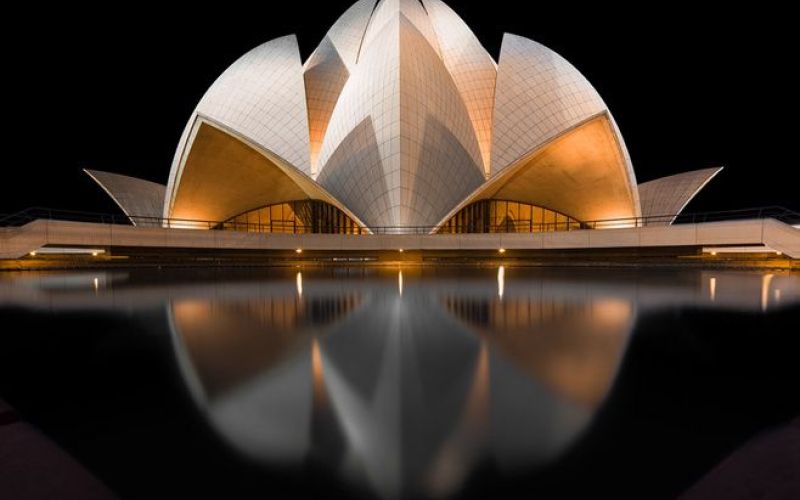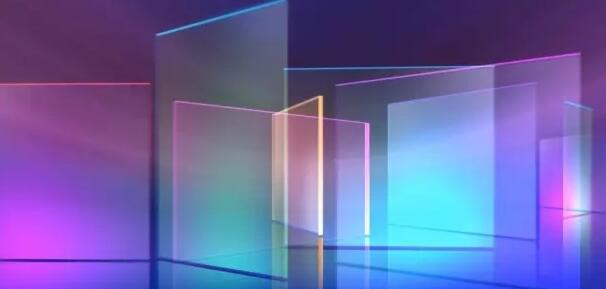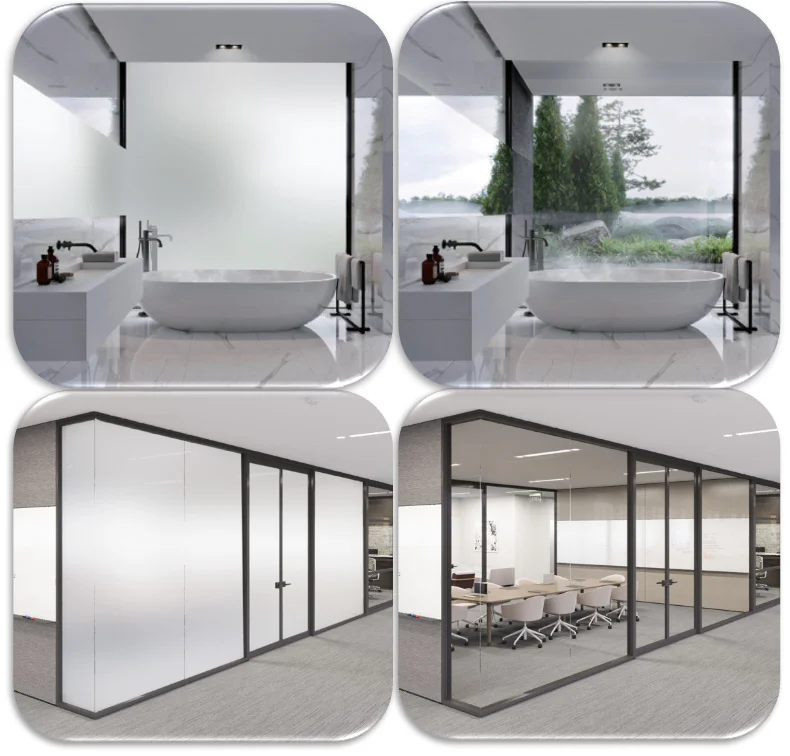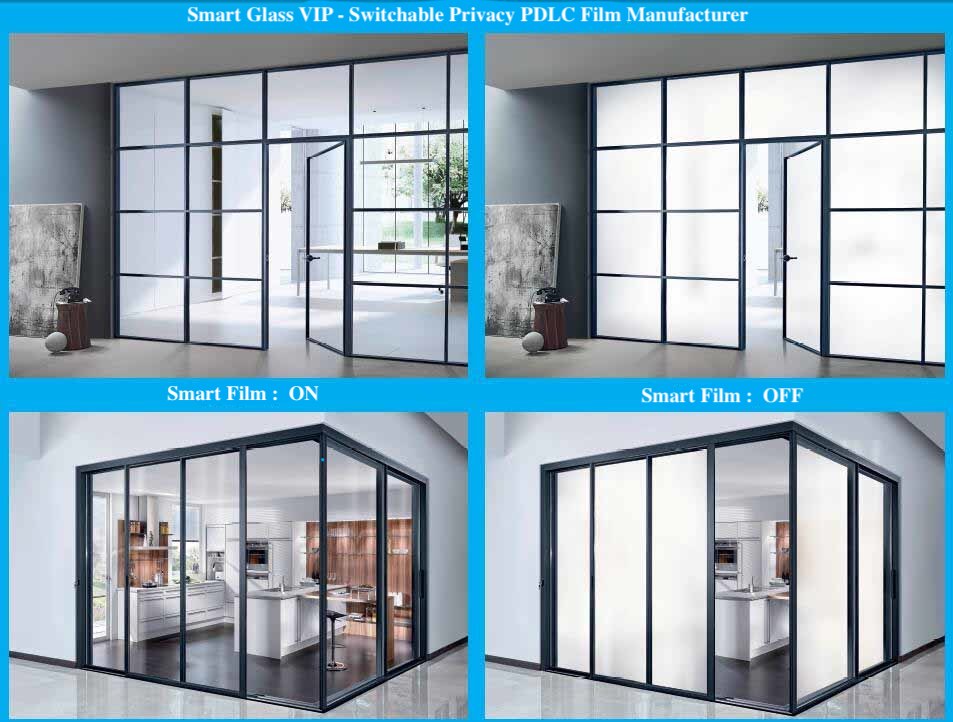Glass is a common material in our lives and its uses are quite extensive. If it is said that the glass industry is always the same, it is difficult to meet the current market demand. Therefore, only by continuously developing new glass can the industry go further. Today we mainly come to understand the introduction of the types of new glass, and see what are the new glass commonly used in our lives? In order to let everyone have a more intuitive understanding, Xiaobian made a brief summary of the types of new glass.
Flat glass
Flat glass refers to flat glass products without other processing, also called white glass or clear glass. It is required to be colorless, with good transparency, smooth and flat surface, and no defects. It is mainly used for door and window lighting, enclosure, and plays the role of light transmission, wind protection and heat insulation. 3 ~ 5mm flat glass is generally used for door and window lighting directly, and 8 ~ 12mm flat glass can be used for partition. Another important application is as the original sheet of glass for tempering, interlayer, coating, and hollow.
Safety glass
a. Tempered glass: Tempered glass is a glass product obtained by heating the glass to a temperature close to the softening temperature of the glass (600-650 ° C) and rapidly cooling or chemically tempering it. This kind of glass is also called strengthened glass, which has good mechanical properties and thermal shock resistance, and can withstand external impact with a certain energy without breaking. Even if it is broken, the whole glass is broken into small particles like honeycomb obtuse angles, which is not easy to hurt people, so it has certain safety. According to different uses, tempered glass can be divided into various types such as fully tempered glass, semi-tempered glass, regional tempered glass, flat tempered glass, and curved tempered glass.
b. Wire glass: Wire glass is also called shatter-resistant glass or steel wire glass. The safety and fire resistance of this new type of glass can be done very well. Even if it is subjected to strong impact, glass fragments will not be broken. Splashes everywhere, high safety.
c. Laminated glass: This kind of glass has better transparency, and its impact resistance is several times higher than ordinary glass. In addition, laminated glass has the characteristics of durability, heat resistance and humidity resistance.
d. Insulating glass: Insulating glass is made of two (or three) pieces of glass, using a high-strength and air-tight composite adhesive, and bonding the glass piece with an aluminum alloy frame containing a desiccant to make it highly efficient Insulated glass. By separating two or more pieces of glass with effective support and evenly bonding and sealing the periphery, a glass product with a dry gas space formed between the glass layers. Thereby, it has better thermal insulation, sound insulation and energy saving effects, and can reduce the weight of the building.
e. Titanized glass: Titanized glass is also called unbreakable iron-foil film glass. It is a new type of glass in which the titanium gold foil film is closely adhered to any kind of glass substrate and integrated into one body. Titanium glass has high shatter resistance, high heat resistance and UV resistance. Different base glass and different titanium gold foil films can be combined into different colors, different properties and different specifications of titaniumized glass. Common colors of titaniumized glass are: colorless and transparent, brown, brown reflective, copper reflective and so on.
Energy-saving glass
a. Heat-absorbing glass: This kind of glass is a kind of glass that can absorb a large amount of infrared radiation energy, and it can also maintain high visible light. Heat-absorbing glass has been widely used in doors and windows, exterior walls of buildings, and as car and boat stops. Wind glass and so on.
b. Heat-reflective glass: As its name implies, heat-reflective glass has a high heat-reflecting ability and maintains good light transmission. The main methods are pyrolysis, vacuum evaporation, and cathode sputtering. Colleagues It has the functions of controlling light, adjusting temperature, preventing dry sound and improving architectural art decoration.
Non-building glass
a. Light-functional glass: In fact, this new type of glass is relatively rare in building decoration or home decoration to expand the use of optical instruments or improve its performance. Generally, it is used more for cameras.
b. Laser glass: It is more used in industry, natural science, medicine, military, etc. This glass is mainly used for laser drilling, welding, cutting, ranging, etc.
c. Non-linear optical glass: Modern society is transforming from the electronic age to the photon quantum era. The demand for such non-linear optical glass is relatively large, and it is mainly used for more optical components.
d. Electrical function glass: Electrical function glass generally refers to fast ion conductor glass, electronic conductor glass (ion, electron), mixed conductor glass (such as electrochromic glass), and delay line glass.
Knowing the types of glass above, Xiaobian also introduces another new type of glass, dimming glass.
Dimmable glass is a new type of special optoelectronic glass product with a sandwich structure in which a liquid crystal film is compounded between two layers of glass and then integrated under high temperature and high pressure. The user controls the transparency and opacity of the glass by controlling whether the current is on or off. The glass itself not only has all the characteristics of safety glass, but also has the privacy protection function to control the transparency of the glass. Due to the characteristics of the interlayer of the liquid crystal film, the dimmable glass can also be used as a projection screen, instead of ordinary curtains, to display high-definition pictures on the glass image.
Dimmable glass
Dimmable glass characteristics
a. Privacy protection function: The biggest function of the smart dimming glass is the privacy protection function, which can control the transparent and opaque state of the glass at any time.
b. Projection function: Intelligent dimming glass is also a very good hard screen for projection. Under high light conditions, if a high lumen projector is selected, the projection imaging effect is very clear and outstanding.
c. It has the advantages of safety glass: including the safety performance of preventing debris from splashing after rupture, and good impact resistance.
d. Environmental protection characteristics: The dimming film and film in the middle of the dimming glass can insulate and block more than 99% of ultraviolet rays and more than 98% of infrared rays. Shielding part of the infrared reduces heat radiation and transmission. Shielding ultraviolet rays can protect indoor furnishings from fading and aging due to ultraviolet radiation, and protect personnel from diseases caused by direct ultraviolet rays.
e. Sound insulation characteristics: The light adjusting film and film in the middle of the light adjusting glass have sound damping effect, which can partially block noise.





